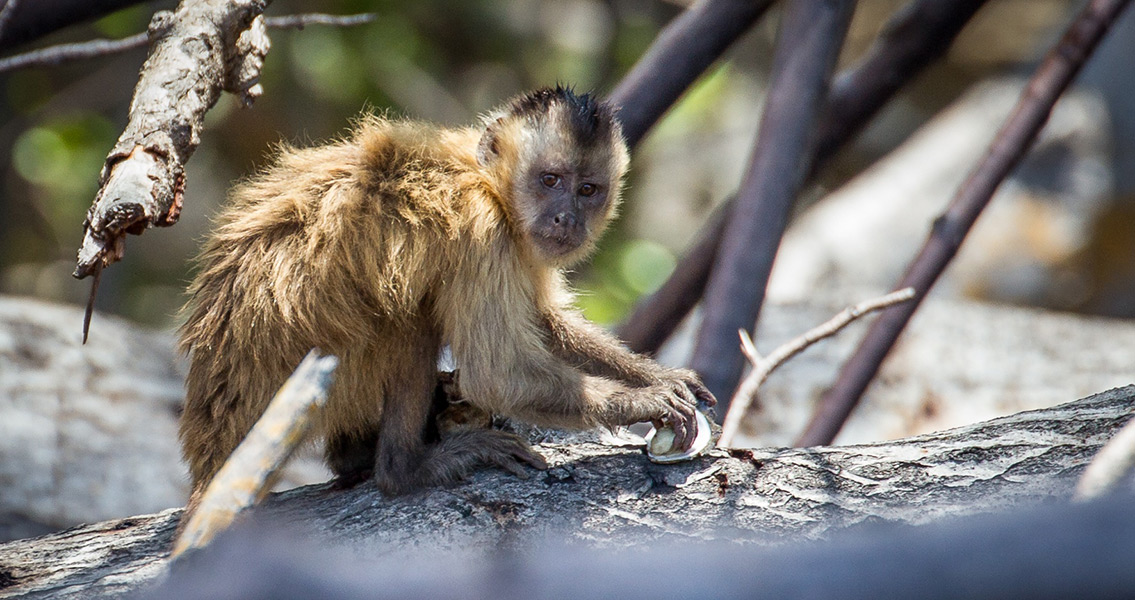<![CDATA[The results of a new research study have archaeologists saying that the capuchin, a species of monkey from Brazil, has a history of using stone tools to obtain food, dating back some 700 years. According to a press release, an international team of researchers from Oxford University and Brazil’s University of São Paulo made the determination after studying modern capuchin populations in northeastern Brazil’s Serra da Capivara National Park, and then also conducting archaeological research onsite. Scientists found that the monkeys used stones as tools to crack open hard-shelled food items like cashew nuts and seeds, with older monkeys showing the younger ones how to manage the operation; the capuchins used specific locations that seemed to be designated for this activity, piling stone tools in places such as the base of a cashew tree after use. Many capuchins would choose their preferred tool from a pile of other stone tools before going to work, and showed a preference for certain types of stone over others when it came to using the tool as a hand-held hammer or as an anvil-like striking surface. Once the researchers had established unmistakable tool use among modern capuchins, they attempted to determine if this activity had developed over time or if it was a relatively recent development. An excavation near a modern cashew processing site yielded nearly 70 stones that were identifiable as being used as tools based on size, shape, and distinctive wear-and-tear; further analysis using mass spectrometry confirmed that cashew nut residue was present on the tools as well. Additional carbon dating of charcoal pieces discovered alongside the stones revealed a date of anywhere between 600 to 700 years old. When the scientists compared the modern tools to those they had excavated, they found many similarities including the materials chosen and the weight of the rocks. With an estimated 100 generations of capuchins relying on stone tools, researchers say that the apparent stability and lack of change in tool use over more than half a millennium categorizes the monkeys as “conservative” in their technology use. This is in stark contrast with the humans living within the same region, who have of course adapted and expanded their technologies considerably across the same time period. According to Oxford archaeologist and research head Dr. Michael Haslam, this find represents the first evidence that primates out of Africa have been using tools for at least hundreds of years. Previously, the only recorded use of tools in non-human animals outside of a modern context came from an archaeological find in Africa’s Cote d’Ivoire, where tools used by chimpanzees were found to be anywhere from 1,300 to 4,300 years old, Dr. Haslam explained. The archaeologist called this an area of scientific study that is as exciting as it is unexplored. He remarked that it could be instrumental in learning if the use of tools in other primates might have had an influence on human behavior; it’s possible, Dr. Haslam said, that humans arriving in northwestern Brazil might have seen the monkeys cracking open cashews to eat them, learning of this otherwise unknown food source. The team’s research findings were recently published in the journal Current Biology, available here Image courtesy of Wikimedia Commons user: Bart van Dorp]]>
Brazilian Monkeys May Have Long History of Tool Use
